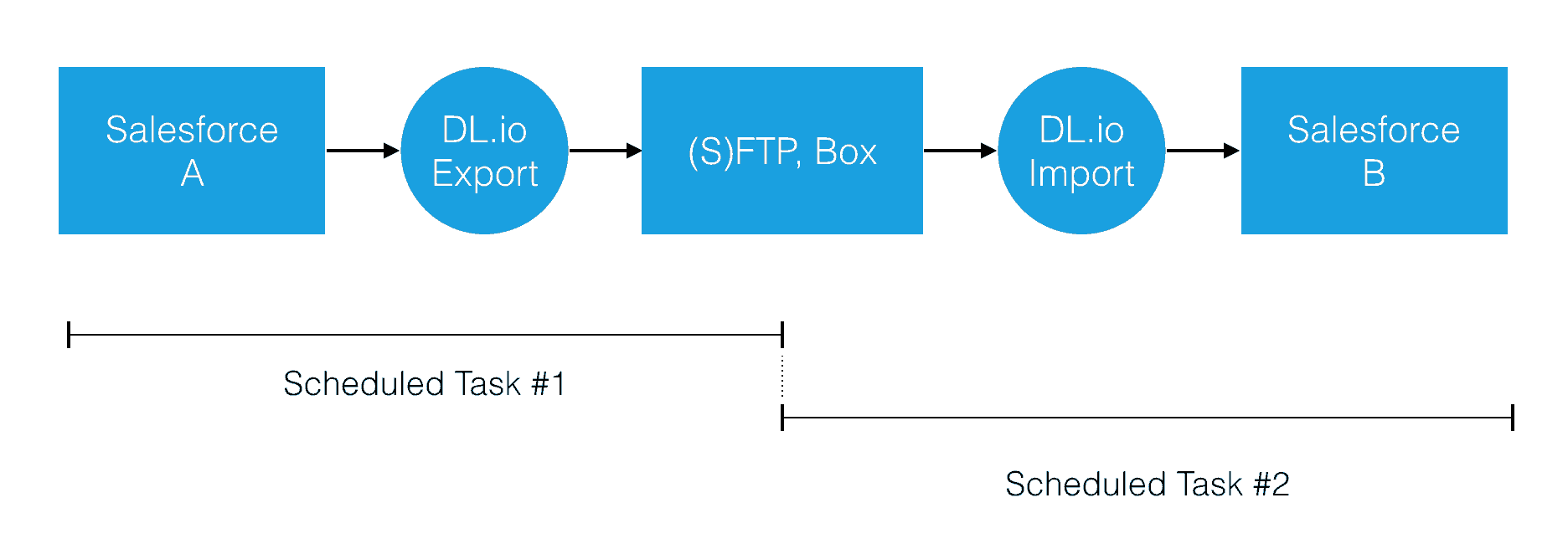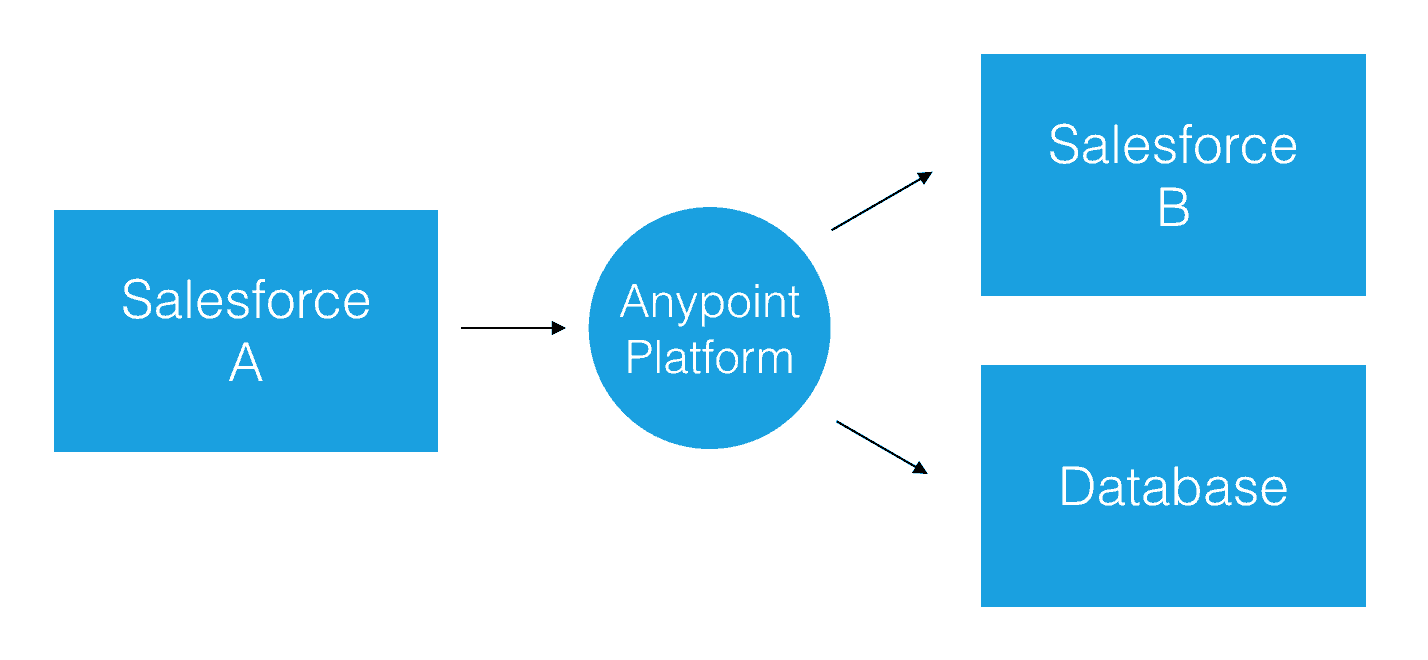MuleSoft makes connecting anything easy, and connecting to Salesforce is not an exception. From out-of-the-box tooling to packaged integration patterns, in this blog post you will learn the options you have to get started on your Salesforce integration.
dataloader.io
We will start with dataloader.io, an easy-to-use, 100% web-based application that allows its users to easily export, import and delete data in Salesforce.com. Most commonly, dataloader.io is used to do basic data cleansing or to migrate large sets of records into Salesforce, but there is a lot more that you can do with it.
Salesforce to Salesforce one way sync:
In the above scenario, scheduled task #1 exports data from Salesforce as a CSV file and uploads that file into a file sharing service like FTP, SFTP, Box or Dropbox. You can schedule the tasks in such a way so that once task #1 is completed, task #2 imports the data into a designated destination such as another Salesforce organization. Even if the source of the data is not Salesforce, dataloader.io can similarly import any CSV formated data into Salesforce.
As exemplified here, dataloader.io is a great tool for simple export, import and deletion of data, but should you need something in addition to its capabilities such as orchestration, bi-directional synchronization or real-time integration, the solutions below may be a better fit.
Anypoint Data Gateway for Lightning Connect
For quick connectivity between back-office systems and Salesforce, use Anypoint Data Gateway for Lightning Connect. Using wizards-based tooling, Anypoint Data Gateway connects to systems like MySQL, IBM DB2, SQL Server, Oracle DB or SAP and exposes its data via an OData API, making it consumable by Salesforce via Lightning Connect. This means without any coding, Salesforce users can see critical back-office data within Salesforce without having to duplicate data into Salesforce.
Exposing SAP data to Salesforce:
In the scenario above, you can use Anypoint Data Gateway to select the source system, such as SAP, to be exposed into Salesforce. Once configured, real-time data from SAP can be fed into Salesforce as external objects. These external objects from SAP can be shown as a tab within Salesforce for any Salesforce user to leverage.
Anypoint Platform & Anypoint Templates
Both dataloader.io and Anypoint Data Gateway are powered by Anypoint Platform, a hybrid integration platform for SOA, SaaS and APIs. To help users go from a blank canvas to a production application quickly, we have designed a set of Anypoint Templates to demonstrate integration best practices that feature popular endpoints such as Salesforce. Below are a few examples:
Salesforce and database bi-directional sync:
This template shows how to bi-directionally synchronize data between Salesforce and any database. The template is a great place to start, but can be extended or customized to better fit your needs.
Broadcast from Salesforce to multiple systems:
This template serves as a foundation for synchronization of objects from a Salesforce instance to many destination systems using the publish/subscribe pattern. Anytime there is a new object created or a change is made to an existing object, the integration will capture the changes and publish them into a queue. A subscriber application then will poll the changes from the queue and update the target systems, which in this case are Salesforce B and database instances.
In this blog post, we’ve summarized the most common Salesforce integration challenges and mapped them to MuleSoft’s solutions. Give them a try and if you have any questions or feedback, let us know at info@mulesoft.com.













